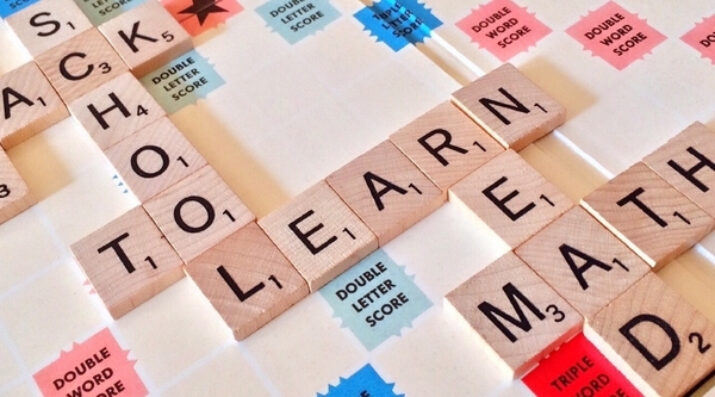Destigmatizing Failure
Topics

We’ve all had the experience of truly purposeful, authentic learning and know how valuable it is. Educators are taking the best of what we know about learning, student support, effective instruction, and interpersonal skill-building to completely reimagine schools so that students experience that kind of purposeful learning all day, every day.
As more schools use mastery-based learning and grading, teachers are grappling with reframing and normalizing failure as part of the learning process.
I have emotional memories of failing at school myself. In high school, despite being a rather strong student, I failed my midterm geometry exam miserably—missing every problem in a section on Euclidean triangles. I went through what most of us experience at this point: extra tutoring sessions after school and the stigma from teachers and peers of needing extra help. This innate fear of triangles is still in me today, long after I actually mastered the skill!
As teachers, if we are not careful, we are passing these fears along to our students, just as our teachers passed these fears to us. However, as the move toward mastery-based grading becomes more prevalent in U.S. classrooms, teachers must grapple with reframing and normalizing failure as part of the learning process. We must give students the tools to fail safely, teaching students to make failing grades a learning opportunity instead of a blow to their self-confidence.
What Actually Is Failure?
As educators, we need to start to re-examine what it means to give a student a failing grade. To fail means to “be unsuccessful in achieving one's goal.” Teachers must choose to define this as the student was unsuccessful in this singular attempt to demonstrate a skill or concept. It bears no true meaning to the student’s long-term capabilities or potential—just that at this moment this particular skill has not been mastered. Like myself and Euclidean geometry, I just didn’t understand it quite yet. A failing grade is not a life sentence—but rather a data point that is proven to be useful on a long path of learning.
The Role of Failure in a Mastery-Based Classroom
Mastery, or standards-based, grading is a shifting mindset in which students are graded based on their proficiency of a certain skill, usually attached to a curricula standard. Assessments are built to isolate these skills, taking away potential noise traditionally included in gradebooks like work completion or participation. These data points of proficiency can be used to assess each student’s comprehension of that skill and to assign the student’s next learning task in that class: either relearning/revision or expansion of that skill.
Helping Students Embrace Failure
As teachers embrace mastery-based grading, we must be intentional about how we frame failing grades to students. It is our job as a teacher to emphasize that failure is part of the learning process, often a necessary step toward mastery. While doing this, we will not only hold our students to a high learning standard but also help them develop effective strategies and mindsets essential to becoming a lifetime learner. Here are some suggestions to bring this into your classroom.
- Reword Your Grading Scale. While you will still most likely be limited by your district’s grading system, try to make sure your rubrics or student-facing materials use student-friendly, growth-mindset wording. In my class, I switched from saying “Not Proficient” when mastery was not met to “Not Yet Proficient.” With this simple word addition, students felt safer when receiving this feedback and were ready and willing to then commit to the relearning process.
- Create Clear Reteach and Reassess Policies. If we really want to destigmatize failure, we have to afford students the opportunity to try skills again once being re-taught. Reteaching skills and offering reassessment should never be punitive; it should allow students’ grades to reflect their eventual mastery. To promote the reteaching process, I usually have video lessons and demonstrations available for students to use at their own pace and at least three versions of each mastery check for students to take again when ready. I update my gradebook just about daily so students can see their progress quickly and accurately, with the final grade of mastery being the only grade utilized toward any final grade.
- Assess Skills Multiple Times. As we build units, we often are revisiting basic skills as we build upon them toward more advanced skills. In science, you need to know the parts of an atom before building a Bohr model. In writing, you need to write a claim before you can build an essay. Be intentional to reassess skills multiple times, allowing students to show mastery of foundational skills as we build upon them. If we give students advanced work without basic skills, we set them up to fail. Hold them to a high standard from the start—and support them when they fall short—and once they reach the end, they’ll be able to show real mastery.
- Consider a Self-Paced Classroom. While fully jumping into a self-paced classroom might seem scary (but if you are interested—be sure to check out the Modern Classroom training), it will do wonders in terms of allowing students time to become proficient on their own terms. If you aren’t ready to fully revamp your classroom this way, find ways to incorporate days into each unit that are self-paced or choice based, allowing students to participate in reteach/reassessment or extension activities as they need to instead of using personal time. This will give students, and you, time and opportunity to close any knowledge gaps and ensure that any temporary failure translates to lasting proficiency.
If I could travel back to my days with Euclidean geometry, I wonder if I was offered a simple reteach and reassessment instead of shame and weeks of after-school tutoring, would my perception of my abilities in math have changed? If I saw my failure as simply an opportunity to learn more, could I have saved myself from fear in future math assessments?
As our schools shift toward mastery-based grading, we need to shift our framing of grades as well. We need to allow students to fail without stigma and instead celebrate them as they pivot and continue their path toward proficiency.
Image at top by pixabay.




